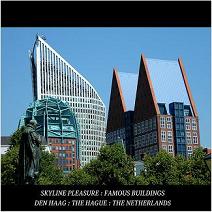Deconstructivism in architecture
Deconstructivism in architecture was born in the late 80s of the twentieth century.
Its characteristic feature is the idea of fragmentation. It also manipulates the surface and the cover of the construction. It is dominated by curvilinear shapes, which are supposed to disturb and dislocate the skeleton of the object. The structure of the building has a feeling of controlled chaos and stimulating unpredictability.

Deconstruction is a continuation of an earlier architecture style - postmodernism. However, is stands in opposition to the limiting rules of modernism, including materials fidelity, purity of form or forms functioning. Deconstructivism in architecture rejects the rule of ornament as a side effect or an item of decoration.
Deconstructionists often drew their inspiration from Russian constructivism. Delighted by the new, experimental forms and geometric structure destabilization. Today, in their work, architects need a computer. It helps in the creation of projects in destructivism and inexpensive mass production of subtly differing elements.
In 1988, an exhibition titled "Architecture deconstructionism" in the Museum of Modern Art was organized. It crystallized a new style in architecture and has brought fame to artists who took part in it.
The best example of deconstructionism complexity of this architecture is the Vitra Design Museum designed by Frank Gehry. It is a white, bare cube-shaped building, which was deconstructed using geometry evoking abstract expressionism and cubism.
One of the best architects of deconstructionism are: Frank Gehry, Vlado Milunić, Zaha Hadid, Coop Himmelb (l) au, Peter Eisenman, Bernard Tschumi, Rem Koolhaas, Daniel Libeskind.
The most famous works of architectural deconstructionism are: "Dancing House" in Prague, the Imperial War Museum in Manchester in the UK, Vitra Design Museum in Weil-am-Rhein (Germany), Seattle Central Library in USA, UFA-Palast in Dresden , the Guggenheim Museum in Bilbao, Spain, the MIT Stata Center in Cambridge, USA, The Jewish Museum in Berlin, Vienna, Austria Gasometer, BMW World in Munich (Germany), Limoges Concert Hall and the Parc de la Villette (Paris), France, New Acropolis Museum in Athens (Greece), the Contemporary Jewish Museum in San Francisco in the U.S., CCTV HQ in Beijing, China and Gehry Tower in Hannover, Germany.